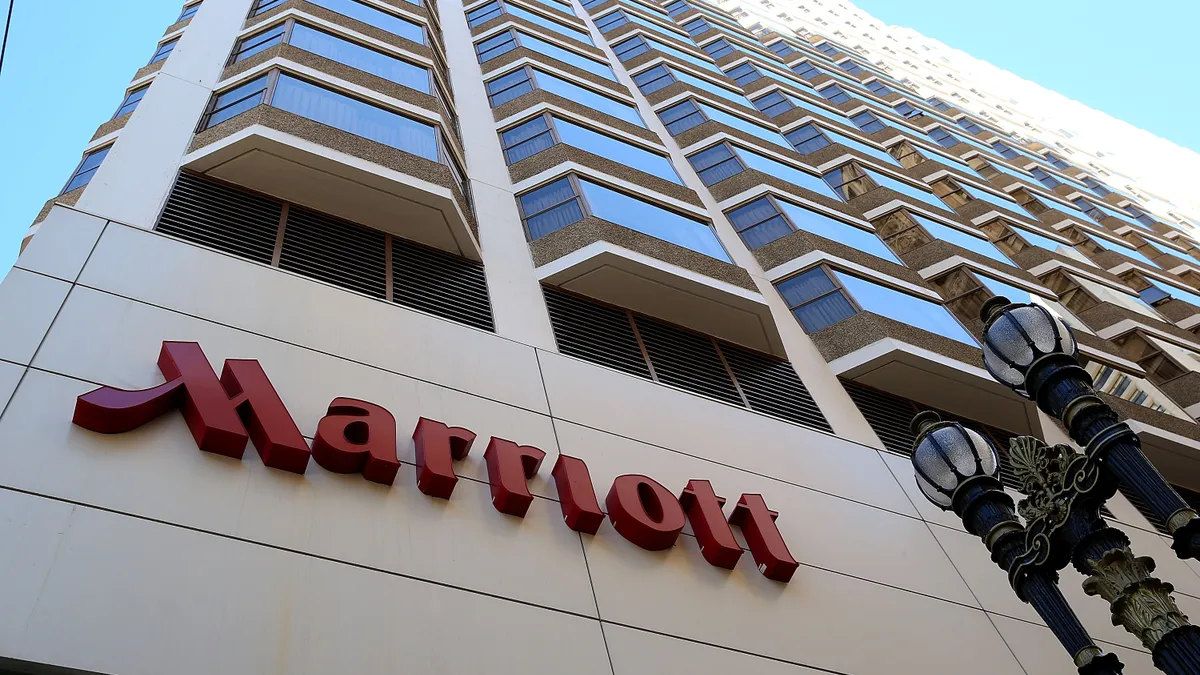The "hits just kept on coming" during the past year for Marriott International, according to Jessica Lee, the company's vice president of performance and brand talent advisory. Not only was the hotel industry hit especially hard during the pandemic — according to the American Hotel and Lodging Association, the industry is likely to sustain a net loss of more than 475,000 hotel employees from pre-pandemic levels by the end of 2021 — but Marriott also suffered its own losses, facing the death of its president and CEO, Arne Sorensen, this past February.
At the HR Technology virtual conference, Lee laid out four approaches that helped ensure her team made it through the last year "not just surviving, but thriving."
1. Be clear when you know what's happening — and when you don't.
Early in the pandemic, executives were scrambling to understand how long the effects might last, Lee reminded attendees. Slammed by the economic circumstances, Marriott put the majority of its corporate team on furlough. Relaying to team members that they would be furloughed through "no doing of their own" was "one of the most difficult things I've ever had to go through," Lee said. "It was extremely difficult to send that message."
What made all the difference, Lee said, was approaching employees with honesty and transparency. When they had the answers about what was happening, they shared them — and when they didn't, they shared that, too. "Trying to give promises that you know could not be fulfilled would have been the wrong thing," she said.
The respect went beyond delivering the message with clarity, Lee said. She pointed to the spate of companies getting into hot water at the time for laying off employees on 10-minute Zoom calls and for other careless approaches. While Marriott let employees know the reality of the situation, even when things were "murky and unknown," leaders were "thoughtful" about how to talk to employees. "We were humans about it," she said. "We weren't just robots delivering a message."
2. Create frictionless tools that 'treat people with grace.'
Earlier in her career, Lee spent time working in the employer brand space, she said, where she wrote up creative briefs. During the pandemic, she drew on the guiding principle for these briefs — "How do we want people to feel when they encounter this product?" — as she facilitated certain necessary "emotional and upsetting" transactions for associates.
At the time, people across the country were attempting to access unemployment insurance, an already emotional process "made worse by overburdened systems within each state," Lee said. Watching the frustration play out in the news and online, she "slept very little in an effort to try to bring tools to life that would make the life-impacting experiences people were going through [at Marriott] smooth."
"I think that's a question that I don't know that we ask enough when it comes to designing technology or designing process," Lee said. "We talk a lot about what the transaction is we're wanting to facilitate, what the outcome is we're trying to get to … but we don't often talk about the person and what they are feeling."
3. Stay close to the action.
The third strategy Marriott used to weather the pandemic is simple but easily forgotten by leaders, Lee said: Stay close to the action to make better decisions at the end of the day.
"I think as you grow in your career [as an HR leader], you become more and more removed" from "that salient transaction between the customer and your company or between the customer and a product," she noted, with aspects like leadership and driving innovation taking the lion's share of HR professionals' attention. But getting too far removed can be a mistake.
While executives could work remotely, Marriott's front-line crew — its hotel staff — had to adjust to a new customer-service situation, including enforcing new policies related to mask-wearing and social distancing. "What was really important [for Marriott] was, 'How do we help people [enforce policies] in a way where they are going to feel comfortable and natural and help our guests feel comfortable and natural?'" Lee wondered, noting that masks even hide employee smiles that could ease customer service interactions.
The process was humbling, involving Lee masking up on Zoom calls and analyzing body language with colleagues to help them understand what puts people at ease, and practicing mask-up requests over dinner with her husband or with co-workers on the phone, aiming for a phrase or set of phrases that would put people at ease. Making better decisions comes from being directly involved in the day-to-day conundrums and knowing the details, Lee said.
4. Focus on what you can control.
While Lee doesn't work primarily in the D&I space, the events of last year surrounding the death of George Floyd and the social unrest that ensued brought the "opportunity to be tested" as an HR professional, she said. She considered how she could be supportive and useful outside existing efforts to articulate the company's support for racial equity.
The opportunity eventually presented itself when she hosted a webchat with a large audience about the changing world of work. She decided that rather than talk about her own experiences, she would give a member on her team a platform to talk about how the past year had affected her personally. "It's a completely different environment for her as a Black woman," Lee said. "Dealing with burnout for her was completely interlaced … with what was happening in society around her."
While offering the platform was a "small act," the woman later told her it had been one of the best days of her career, Lee reflected. "I'm not driving our company's strategy when it comes to diversity and inclusion," she said. "But what I realized in that moment was that that doesn't mean I'm helpless or that I don't have influence."














